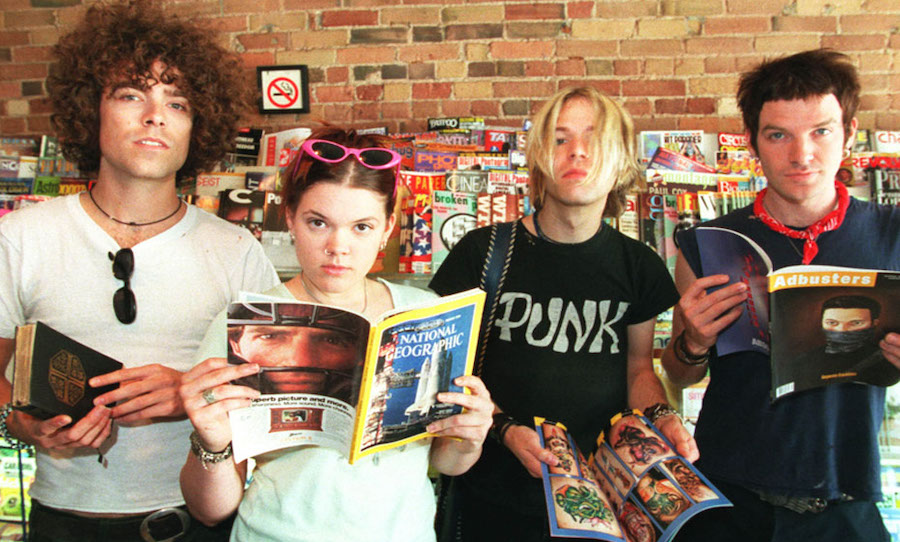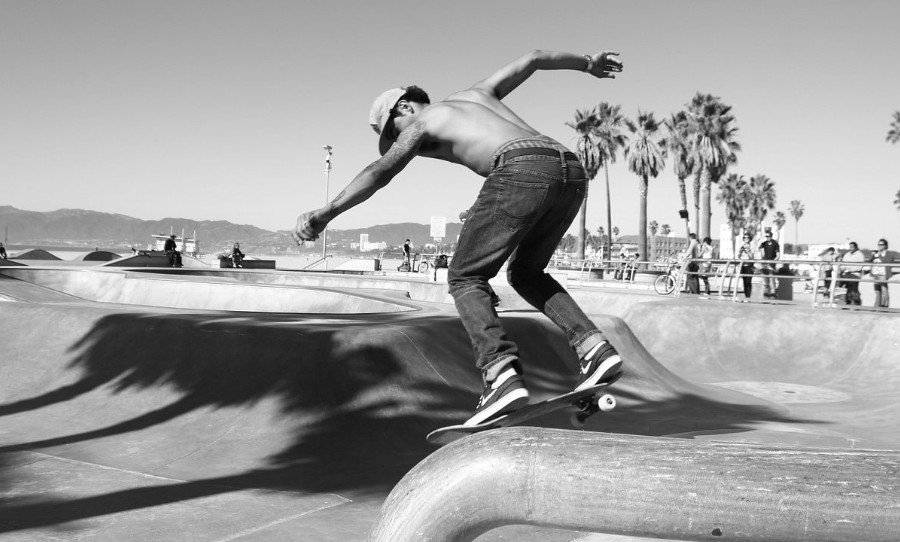In their first six years as a band, The Dandy Warhols quickly established themselves as outliers in the rock and roll scene. Tinkering with garage, psych-rock, electronica, glam, shoegaze, and classic rock sounds throughout their first two albums meant the band was quite hard to define. As a result, there was a shift in focus away from their music and towards their attitude; blissed out and purposefully nonchalant.
The band’s unconventional approach to genre was never more outstanding than it was in August 2000, when the Portland-based group released its third album. Thirteen Tales From Urban Bohemia is undoubtedly The Dandy Warhols’ best work; a baker’s dozen of infectious rock tracks that exude the band’s playful character and a distinct sense of melancholy. It was through this album that the Dandy Warhols helped kick-start the naughties rock revival, paving the way for garage and alternative superstars for years to come.

Thirteen Tales From Urban Bohemia is an album that defines an era, painting The Dandy Warhols as some of the most influential, if the most unlikely, hitmakers of the new millennium.
Frontman Courtney Taylor-Taylor had a vision for Thirteen Tales From Urban Bohemia, and in order to achieve it, the band started cultivating a far more specific sound compared to previous releases.
In contrast to dabbling in a whole universe of genres, Taylor-Taylor took a deep dive into the world of classic rock, allowing some of the rock scene’s most significant figures, from George Harrison to The Grateful Dead, to inspire his sound:
“We felt like we needed to make the last classic rock album. A record that would be, sonically, shaped somewhere in-between All Things Must Pass and Workingman’s Dead.”
In 1999 the thought of reviving the classic 1970s rock and roll sound was uncool to the bone, but distancing themselves from the current trends was quite the deliberate act. Already knowing their album would be unique, The Dandies rented out what was once a gay men’s gym in Portland to record their album.
This unexpected setting became the band’s creative haven. Zia McCabe, the band’s keyboardist, said at the time:
“We recorded the album in this old gay men’s gym. We took it ’cause we were so desperate for a place. The sauna became the drum room, there were lots of shower rooms to record in and one little office that we made the control room.”
The end result of Thirteen Tales From Urban Bohemia is messy musical perfection. Opening track Godless pulls you into its sprawling atmosphere and immediately declares its darkness. On Country Leaver Taylor-Taylor drawls his way through a twangy backdrop, reintroducing the confident swagger and self-assurance that the band and especially its frontman was known for. Solid is rocky bliss-out, while Horse Pills showcases a sharp lyrical wit.
Get Off sits pretty in the middle of the album – a short-lived song about the lavish life of a star, filled with sex, drugs, and rock’n’roll.
The Dandies also gave us a taste of a much more sombre style throughout Thirteen Tales From Urban Bohemia, especially in tracks like Big Indian and The Gospel, arguably one of the most stunning conclusions to a rock album.
Of course, the album’s most famous track is Bohemian Like You, which has also been acknowledged as the band’s most influential creation. Dropping a few subtle nods to The Rolling Stones, with its shambling percussion and catchy chorus, it’s impossible not to like. After the track was featured in a big-time Vodafone campaign, an interest in the band’s style grew.
Soon enough, everyone wanted a piece of the ‘new-old’ sound, and groups like The White Stripes and The Strokes were taken far more seriously.
When looking back on Thirteen Tales From Urban Bohemia, what stands out is how The Dandy Warhols probed their hedonism as a sonic inspiration. Unhappy with the music the world had on offer, Taylor-Taylor and his band were determined to bring a bit of old school style back for good.
And that’s exactly what they did.



